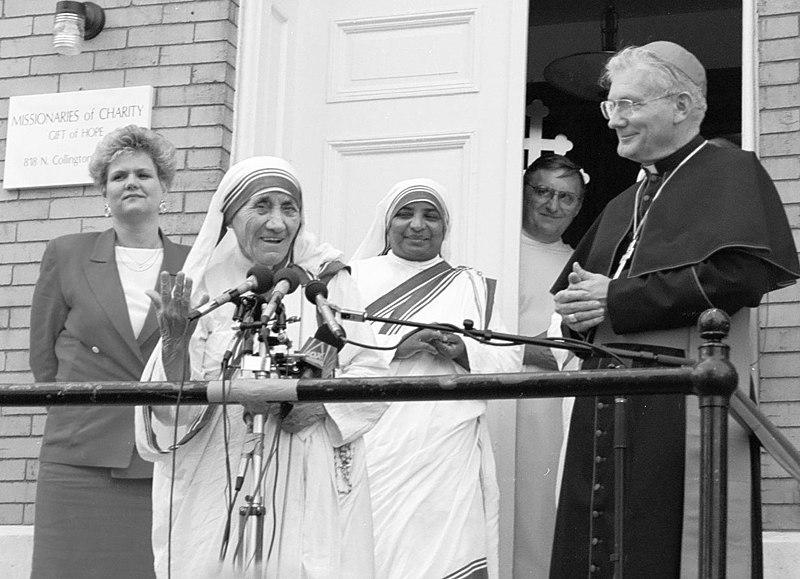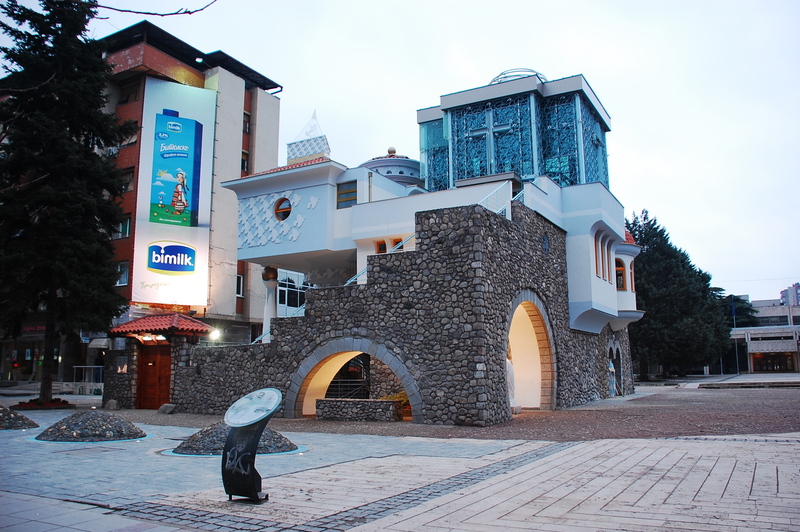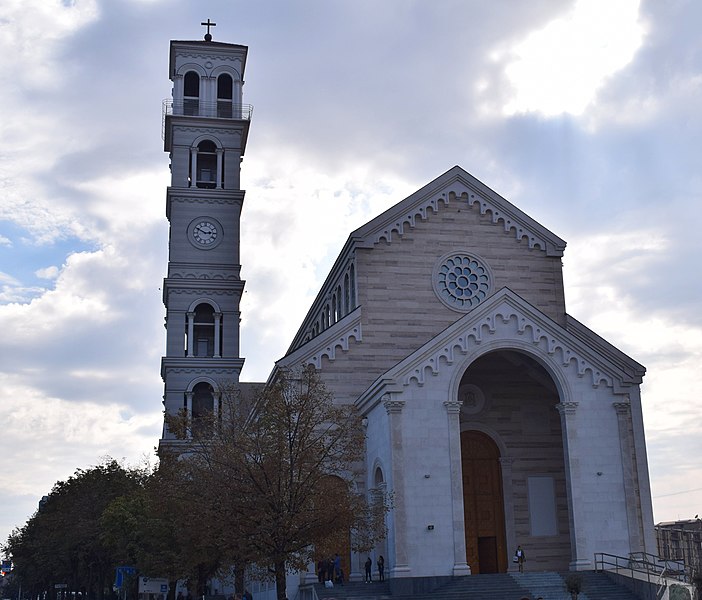Mother Teresa or Saint Mother Teresa of Calcutta was the name of Mary Teresa Bojaxhiu, an Albanian-Indian Catholic nun and the creator of the Missionaries of Charity. In Skopje, then a part of the Ottoman Empire, she was given the name Anjez Gonxhe Bojaxhiu. She relocated to Ireland at the age of 18, then spent the majority of her life in India. She was declared a saint on September 4, 2016, becoming Saint Teresa of Calcutta. September 5 honors the anniversary of her death and is also her feast day.
As of 2012, the religious order Missionaries of Charity, which Mother Teresa founded, has more than 4,500 nuns spread throughout 133 nations. The church is in charge of homes for people with leprosy, TB, and HIV/AIDS. Additionally, the organization oversees orphanages, schools, mobile clinics, soup kitchens, dispensaries, programs for children and families, and orphanages. Along with their chastity, poverty, and obedience, members also swear to provide “wholehearted free service to the poorest of the poor.”
Mother Teresa received several honors, including the 1962 Ramon Magsaysay Peace Prize and the 1979 Nobel Peace Prize. Mother Teresa was a divisive figure both during her lifetime and after her passing. She was praised by many for her philanthropic work but derided for her stances on abortion and contraception as well as the subpar circumstances at her homes for the terminally ill. In 1992, Navin Chawla’s authorized biography of her was released. She has also been the focus of numerous other works. Mother Teresa and Saint Francis Xavier were appointed co-patrons of the Roman Catholic Archdiocese of Calcutta on September 6, 2017.
Early Life
Agnes Gonxha Bojaxhiu was born on August 26, 1910, in Skopje, Macedonia, to parents of Albanian descent. Despite not being wealthy, her family had a comfortable lifestyle. Her father was a successful businessman who ran a construction company and traded medications and other products. Mother Teresa was just 8 years old when he passed away. He was also active in politics.
Her mother, a very devout woman, frequently invited the city’s homeless people to dinner when she was a child. Young Agnes made a deep impression and was introduced to the idea of charity when she asked her mother about the people dining with them and her mother would only reply, “Some of them are our relations but all of them are our people.” She developed an early fascination with Bengali missionaries’ lives and their humanitarian endeavors. At age 12, she decided to dedicate her life to religion.
She left her family four years later to become a missionary and joined the Sisters of Loreto in Rathfarnham, Ireland. She spent a year at the Loreto Convent before being moved to India’s Darjeeling to start her novitiate. She picked up Bengali there and later rose to the position of principal at a nonprofit school close to their monastery. Her life as a school principal was comfortable, though not particularly opulent. But she was part of God’s other plan for her.
Heeding the Call
One of the worst famines the Bengal province has ever known occurred in 1943. Nearly 3 million people passed away from diseases like malaria and starvation. Women became widows, and many families became homeless. And because widows in Bengali culture were viewed as second-class citizens, many of them wind up begging on the streets of cities like Calcutta.
Sister Teresa, as she was referred to at the time, led a rather pleasant existence inside the confines of the school. She had, however, been intensely conscious of the poverty all around her. She could see the starving orphans who frequently end up as victims of violence and the women beggars on the streets. Then, a train trip to a retreat had a lasting impact on her life.
Mother Teresa claimed that on that fatal journey, Christ spoke to her and instructed her to leave everything and aid the poorest of the poor, which she described as “the call within a call.” She behaved in that manner.
Mother Teresa entered Calcutta’s streets with a basic understanding of medicine, a firm commitment to her faith, and a passionate desire to change the world. Out in the streets, she observed poverty firsthand, and she had only one goal: to aid “the unwanted, the unloved, and the uncared for.” She witnessed the horrors that daily life on the streets entails.
She didn’t take long to put her ambition into action with this. She developed a facility for the terminally ill as well as an outdoor school. A few years later, people began appreciating her work, and numerous others joined her cause. This inspired her to form the Missionaries of Charity, a brand-new religious order.
There were only a few people in her new church when it first began. The majority of them were either former pupils or instructors at the charity school where she worked. Donations poured in from all around India as soon as word of her efforts spread. And before she realized it, word of her charitable activity had begun to quietly go around the globe. It also made people aware of the appalling conditions that street people in Calcutta and around India endure.
Mother Teresa’s notoriety increased along with her congregation. They started orphanages, hospices, and lepers homes all over India by the 1960s. The first charitable house was then established in Venezuela in 1965. More charitable homes were then built around the world as a result of this. In 1971, Mother Teresa opened the first house of charity in the United States in New York.
However, her particular style of charity is agnostic. She went to Beirut, Lebanon, in 1987 undercover. At the time, there was severe segregation between the Christian and Muslim populations. She helped young people from both religions cross the barriers separating them.
Additionally, she welcomed unmarried mothers into her charitable homes and even built a special residence for people with HIV/AIDS.
For her efforts in eradicating poverty all around the world, she has won numerous awards and peace Prizes. Both the Jewel of India Award and the Gold Medal of the Soviet Peace Committee were given to her. The Decree of Praise for the Missionaries of Charity was also issued by Pope Paul VI. She also won the Nobel Peace Prize in 1979 for her efforts to aid the world’s suffering people.
Death and Canonization
Mother Teresa’s health had been declining for years when she passed away on September 5, 1997, at the age of 87. The Missionaries of Charity had roughly 4,000 members at the time of her passing.
Pope John Paul II beatified her in 2003 and named her “Blessed Teresa of Calcutta”; in 2016, Pope Francis recognized her as a saint of the Roman Catholic Church during a canonization ceremony in Vatican City.
The Impact of Mother Teresa on the World
She illuminated the true meaning of charity for us
Many of us had the desire to alter the world, but very few of us did so. And very fewer did it with the same bravery as this modest Calcutta woman. She chose this career because she had a sincere desire to help the needy. Her goals are obvious when you consider all of her charitable endeavors. She established leper colonies, orphanages, homes for the elderly, and soup kitchens. She fed the homeless, cared for lepers, and educated the lowest of the poor. Like her family, she cared for them. All of the critiques and subtle remarks made about her failed to quench her passion.
The admirers of charity awareness all around the world were enthused by this altruistic effort. Many were moved by Mother Teresa’s example and joined her in her quest. She had the option to reject her calling, but she chose not to. She gained the respect of the entire world by choosing to trade in her comfortable lifestyle for one of poverty. Her deed demonstrated to the world that helping others will make you happier than worldly possessions.
Universal Love
In addition to changing the world and inspiring us, Mother Teresa altered it by exemplifying what unconditional love is all about. She didn’t care if someone was young, elderly, white, black, brown, or yellow, or if they were a woman or a man. She even traveled to Beirut in the summer of 1982 to aid both Muslim and Christian youngsters. Her unconditional devotion raised HIV/AIDS patients at a time when they were despised. She established Gift of Love, a residence for persons suffering from the illness.
She even allegedly said: “When you judge someone, you have no time to love them.” One of the founding beliefs of The Missionaries of Charity, which currently has more than 5,000 members in numerous nations across the world, is universal love.



